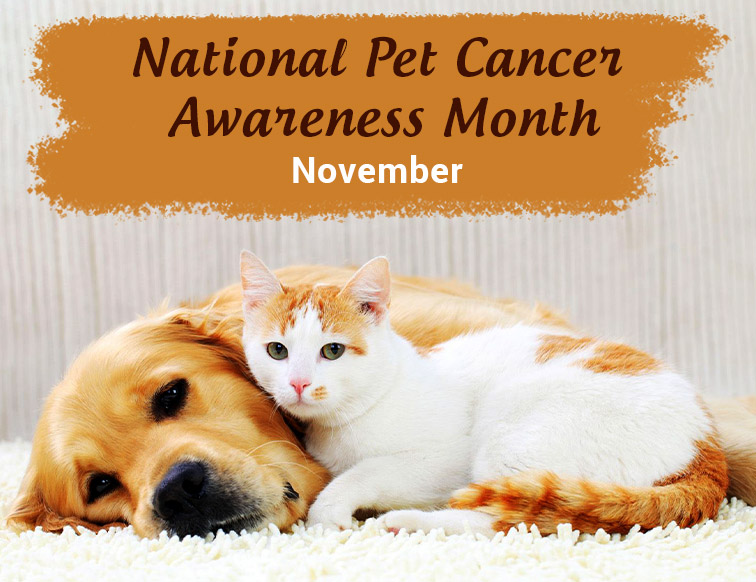National Pet Cancer Awareness Month- November

November is marked as National Pet Cancer Awareness Month by pet lovers. It is an excellent time to learn more about the symptoms and treatments of cancer. It is also a time to show extra affection to the pets living with this devastating disease.
According to the American Kennel Club Canine Health Foundation, more than 50% of dogs older than 10 are at a high risk of having cancer. Likewise, this disease poses a threat to one in four cats. These horrifying statistics make cancer the number one disease-related cause of death in pets.
Pet Cancer Awareness Month aims to spread information regarding the causes of cancer in pets, its types, its early detection, and ways to fight it. Continue reading to be aware of the same and share this blog with other pet parents to keep all the pets around you safe.
What is Cancer?
Just like cancer in humans, cancer in pets is a condition of abnormal and uncontrolled cell growth. Mostly, cancer results in the development of masses of cells called tumors. However, there are types of cancer that do not result in tumors.
Causes of Cancer in Pets
Cancer occurs as a result of genetic damage, but it is almost impossible to know the exact cause of cancer. Studies suggest that there are various factors like the environment, chemicals, hormones, etc. that influence the development of cancer, which results in the mutation of the genes. This mutation causes uncontrolled cell division and leads to cancer.
Common Types of Cancer in Pets
There are various types of cancer-related conditions that can affect cats and dogs. These are the major types of cancer in dogs and cats.
- Bladder cancer
- Oral cancer
- Skin cancer
- Lung cancer
- Anal gland cancer
- Stomach cancer
- Liver cancer
- Bone cancer
- Blood cancer
- Metastatic cancer (the one that affects the entire body)
Symptoms of Cancer in Pets
Pet parents should be aware of the warning signs that may point toward this deadly disease. And if any such abnormality is detected, one should immediately fix an appointment with the vet as the best chance to fight cancer is its early detection. These are the common signs of cancer in cats and dogs that should never be ignored:
- Unusual lumps or bumps
- Persistent swelling
- Unhealing sores
- Loss of appetite
- Weight loss
- Blood in urine
- Unusual discharges from any bodily opening
- Difficulty in breathing
- Difficulty in swallowing or chewing
- Difficulty in passing stool or urine
- Lethargy or reluctance to move
- Unusual odor or bad breath
- Strange behavior
Treatment of Cancer in Pets
Treatment of cancer depends on its type and stage. For decades, there was no known cure for cancer but in the last decade, the first FDA-approved cancer drug for dogs became available. The field of oncology has achieved much advancement in the treatment of cancer.
Expert veterinary oncologists may recommend medications, radiation therapy, chemotherapy, immunotherapy, surgery, or a combination of them. Unfortunately, the treatment of cancer doesn’t necessarily make cancer better. Therefore, the goal of the treatment is to provide the best quality of life for as long as possible.
Although there might not be a cure there are many ways to care. This November, do spread awareness about cancer among all pet lovers and be a part of #nationalpetawarenessmonth to save animal lives.
